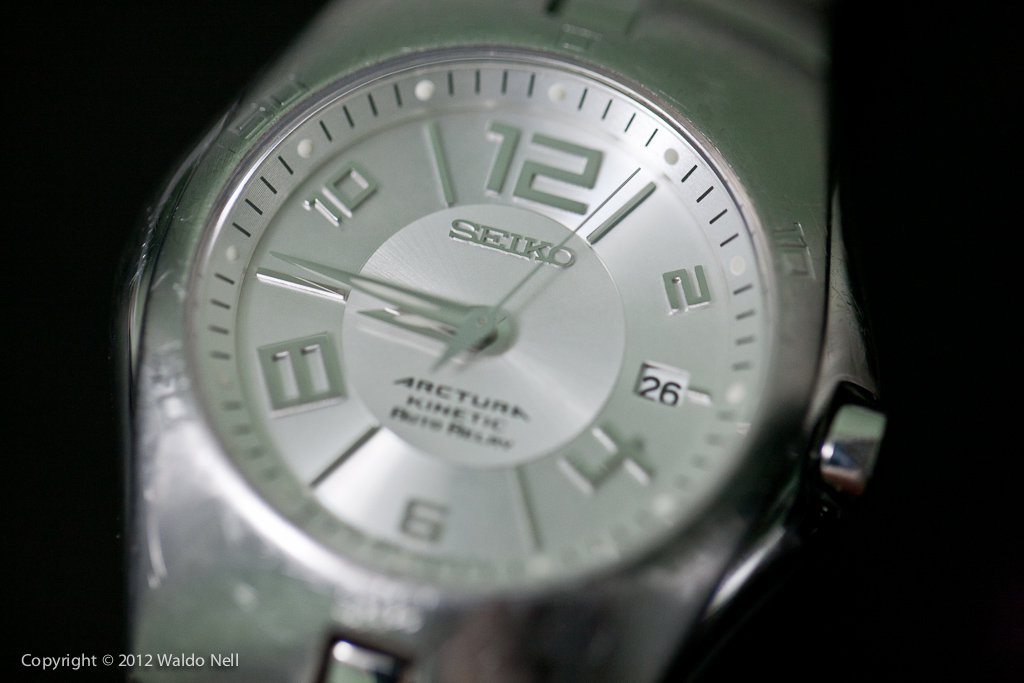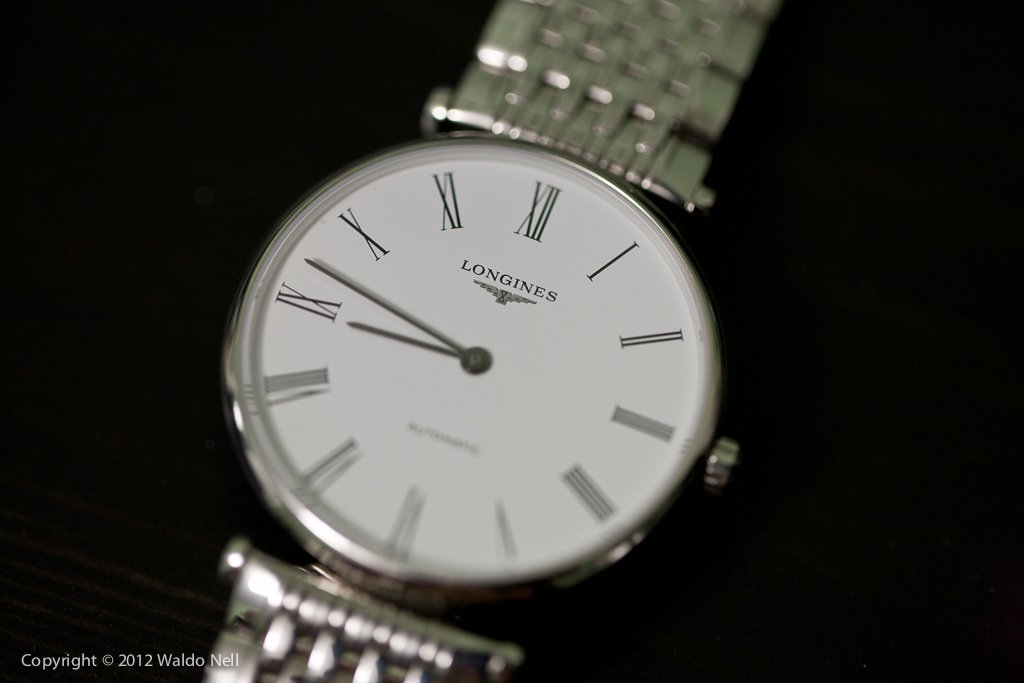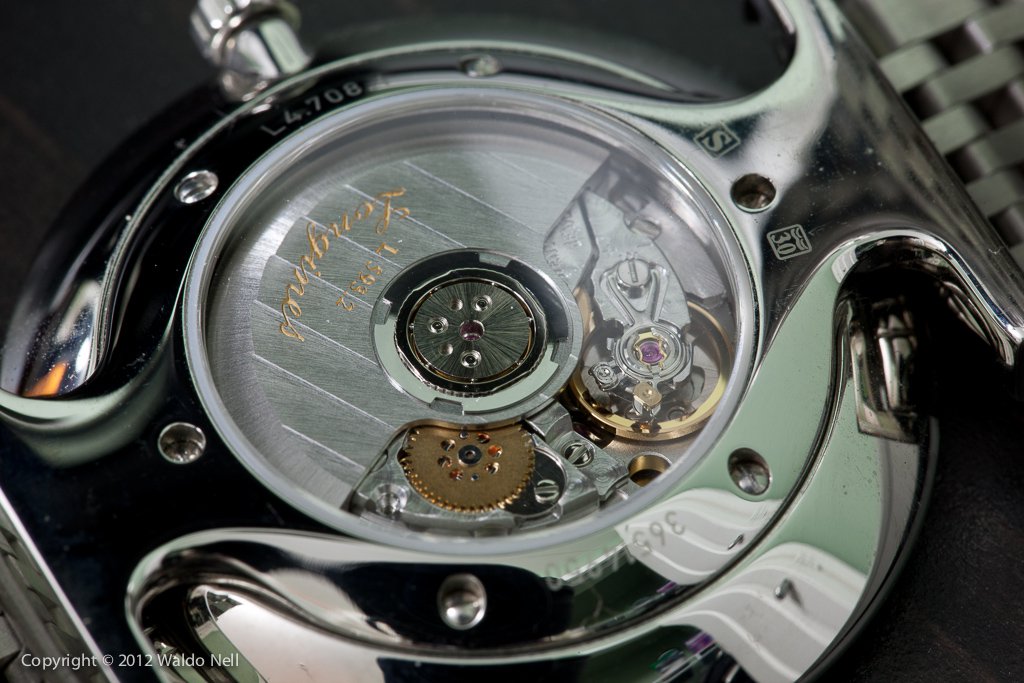Timekeeping
As I have mentioned in an earlier entry, I recently purchased a new Longines analog, mechanical watch to replace my ageing Seiko Actura Kinetic Auto Relay. The Seiko is a great watch, and I have had it since 2004 I think.

But I got tired due to the weight of it - it is a hefty 160g. Contrast this with the meagre 72g of the Longines:


Sure the new watch does not have a date display, cannot store the date for 4 years like the Seiko, is not accurate to 15 seconds per month, is not as water resistant...
The question becomes obvious - why spend more money on the Longines that is in almost every single way inferior to the Seiko except weight? To answer that, let me start at the beginning.
I do not know a lot about watches. So when I went looking for something lighter, my only criteria really was that it should be lighter, flatter and of a high quality. Obviously aesthetically it should appeal to me. Relying for the first time in many years solely on the jewellers' advice, I tried to understand why some watches are way more expensive than others.
I would walk in to a high end jeweller, and see basic, simple, non-precious metal, no gimmicky watches retail anywhere from $1000 up to $30000. Brand names like Rado, Omega, Rolex, Tag Heuer, Breitling and others abound. All are very expensive. Walk in to an average jeweller, and you would see names like Seiko, Citizen, Casio etc. These watches are much cheaper, retailing anywhere between $50 to $2000. So as a novice, I'd ask the high end jewellers to tell me whether this watch I am holding (which would be a $1000+ watch) keeps time more accurately than my Seiko. They all would respond without hesitation, that the expensive watch I am holding is much more accurate. They would describe the watch as "much better" than my Seiko. Going to the average jeweller, I'd hold up a Citizen Eco-Drive and ask her whether this watch is better than the expensive Longines from the high end jeweller across the hallway. She'd respond with a resounding yes! She would say the watch can do everything than the more expensive one can, and some more.
Obviously this leads to a lot of confusion. However I think I finally figured it out.
The thing with watches is there seems to be two major camps. Huge simplification here of course as I am a novice, remember? There is the Japanese school of thought, and the Swiss school. In the Japanese camp watches seem to be driven by the following criteria:
- Cost (Lower is better)
- Accuracy (More is better, does not matter how you achieve it)
- Complications (More is better. A complication is a feature of a watch that exceeds the basic set of hours, minutes and seconds).
The Swiss camp seems to be driven by:
- Cost (higher is better)
- Tradition (mechanical is better than digital because mechanical watches have a soul, digital do not)
- Aesthetics (It must appeal to the upper class' taste)
- Quality of materials (Higher quality is better)
So Seiko and Citizen, both being Japanese companies, would try and make the most affordable watches with the most advanced technology to achieve its goals. Kinetic relay and eco drive are two examples of technology being used to improve the watch from a technological perspective. Kinetic relay is basically a mechanically powered generator powering a quartz (digital) clock. This clock can then drive either a digital display or an analogue one. Same with eco drive from Citizen, which uses light to power hidden solar cells on the face of the watch, which in turn powers a quartz clock. There is no regard for tradition as it is irrelevant to them. And why should it matter? A Seiko kinetic relay watch is typically accurate to 15 seconds per month, which is 99.9994% accurate. That is very impressive, especially considering mine was about $600. But this accuracy can also be had in a $20 watch. Mine was just fancy because it does not need a battery, it can store the correct date and time for 4 years sitting on a shelf and will auto wind back to the correct time when shaken, it has a Sapphire crystal etc. It can display the hour, minute, second and date. So it is a watch with almost no complications, which is rather unique.
On the other hand, Longines (member of the Swatch group), subscribes to another doctrine. Their watches tend to be purely mechanical, as that is considered purer. As far as I know mine does not have any digital components whatsoever. It is an automatic, meaning it is driven by kinetic energy which winds up a spring inside the watch which stores the energy. Because of this I have a maximum of 40 hours before the watch will be flat, if not worn. This is quite different to the 4 years I get with the Seiko. But the Seiko uses either special capacitors or a built in rechargeable Lithium ion battery to store this charge. These things tend to last no longer than 10 years or so. The mechanical watch on the other hand I do believe will last much longer, provided it is oiled and serviced regularly (every 5 - 8 years). The watch has a very French-like style to it, high end and classy, yet extremely basic. It does not even have a second hand. No date. Just hour and minute. It is specified as being accurate to within plus or minus 15 seconds per day. That is 30 times worse than the cheaper Seiko. It translates to an accuracy of 99.98%, which is amazing if you consider it is a purely mechanical device. But it is put to shame by the quartz watch. The quality of the material is low end for a high end watch, being stainless steel with a sapphire crystal. Some of the higher end watches have ceramic bands, gold or platinum, diamonds etc. Rado is known for their use of interesting materials such as ceramics.
So the conclusion is this: If you want a traditional watch and care about the insane amount of mechanical skill required to build these time honoured devices, then go get a high end watch and pay the price for it. Do realise it will most probably not keep time as well as a cheap $20 quartz watch. If however you like to be on the forefront of digital technology, then go get a Japanese watch. They are brilliant and will last a very long time. I had my first Casio I bought myself for about 8 years. The Seiko was with me for 7 years. There is absolutely nothing wrong with it, just... too heavy. However I like change, and I will cherish this Swiss mecca as long as it keeps reasonable time :)